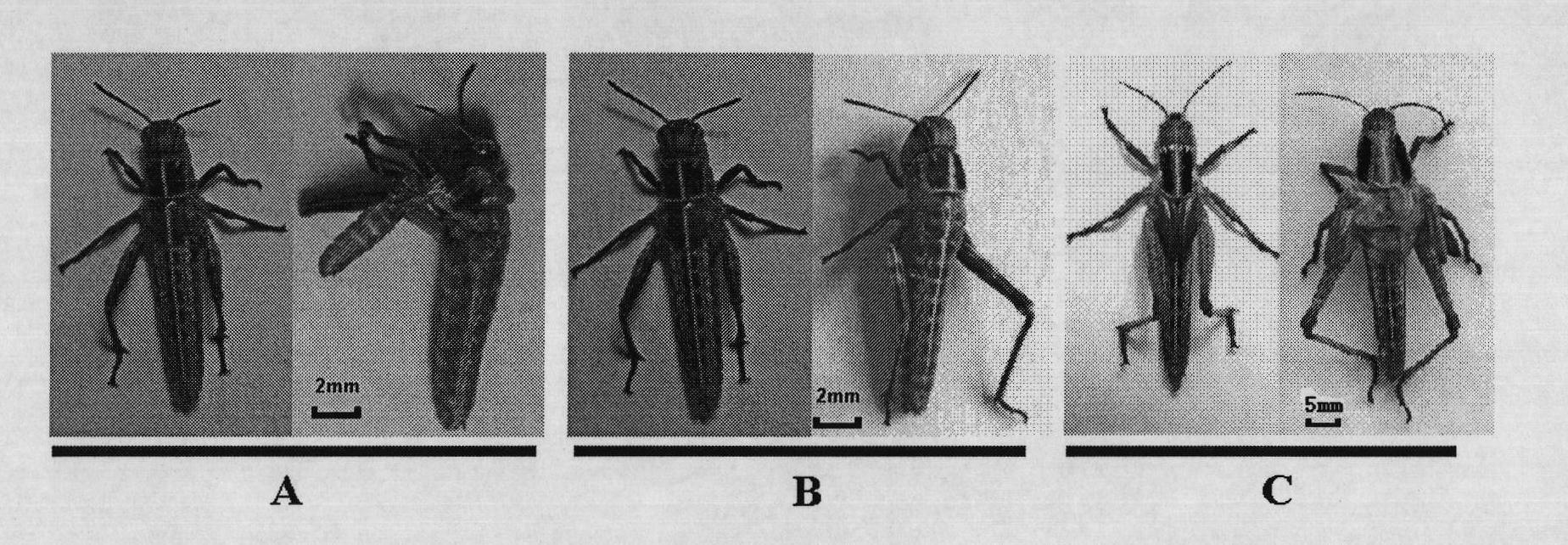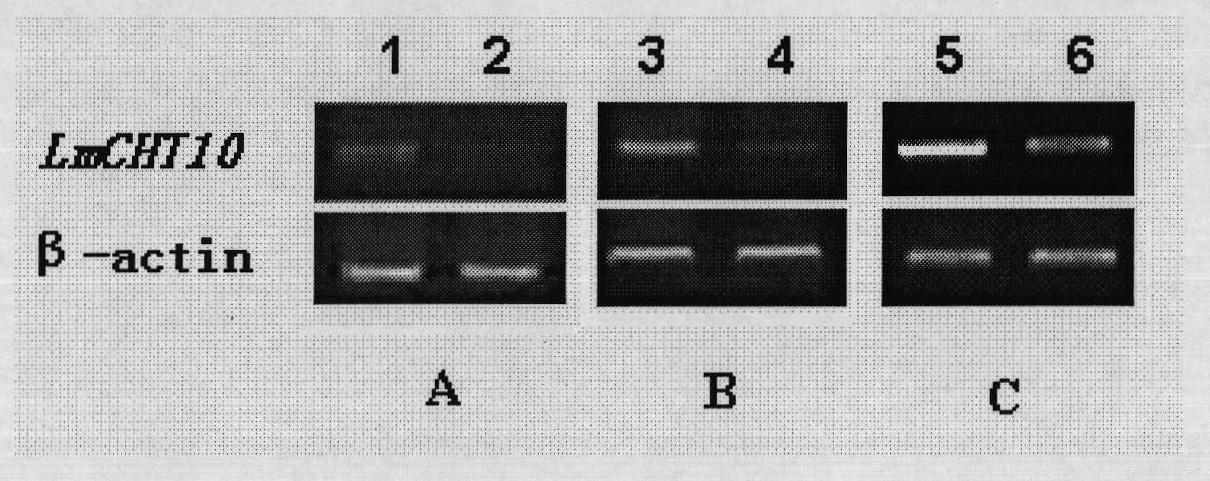Chitinase genes of insects and application of dsRNA thereof
A chitinase gene, insect technology, applied in DNA/RNA fragments, applications, genetic engineering, etc., can solve problems such as non-target biological impact, long insecticidal time, and environmental pollution
- Summary
- Abstract
- Description
- Claims
- Application Information
AI Technical Summary
Problems solved by technology
Method used
Image
Examples
Embodiment 1
[0012] Example 1: Acquisition of Chitinase Gene Fragment and dsRNA of East Asian Migratory Locust
[0013] 1. Acquisition of Chitinase Gene Fragment of East Asian Migratory Locust
[0014] 1) Search of chitinase gene of migratory locust in migratory locust expressed sequence tag EST database
[0015] Based on the expressed sequence tag (EST) database of migratory locust, the chitinase gene of migratory locust was searched by bioinformatics method. After sequence analysis and comparison, a total of 7 chitinase gene fragments were obtained.
[0016] 2) Design of RACE primers for migratory locust chitinase gene
[0017] Based on the base sequence of the obtained chitinase gene fragment, it was designed using primer premier5.0 software. All primers were synthesized by Shanghai Yingwei Jieji Biological Co., Ltd.
[0018] 3) Obtaining total RNA from migratory locust
[0019] Select the 5th instar nymphs of migratory locust with equal size, half male and half male, in groups of f...
Embodiment 2
[0042] Example 2: Chitinase gene dsRNA kills migratory locust
[0043] 1. Injection of chitinase gene dsRNA in East Asian migratory locust
[0044] Inject 2 μl (about 6 μg) of dsRNA of SEQ ID NO: 2 or SEQ ID NO: 3 with a 25 μl micro-syringe between the second and third abdominal segments of any instar nymph of migratory locust, and inject 3 biological replicates in total, 10 in each group. Only, half male and half male. Inject dsGFP at the same volume concentration into the control group. After injection, migratory locusts were raised in a constant temperature biochemical incubator at 28°C.
[0045] 2. Observation of the phenotype of the East Asian migratory locust after injection of dsRNA
[0046] There was no significant difference in food intake, body shape change and weight gain between the experimental group injected with dsRNA migratory locust and the control group. During the molting process, the migratory locusts in the control group molted smoothly, and it only took...
Embodiment 3
[0054] Embodiment 3: Chitinase gene dsRNA kills Oryza chinensis
[0055] 1. dsRNA injection of O. chinensis SEQ ID NO: 3
[0056] 2 μl (about 6 μg) of dsRNA of SEQ ID NO: 3 was injected with a 25 μl micro-syringe between the second and third abdominal segments of any instar nymphs of O. sinensis, and a total of 2 groups of biological replicates were injected. Inject dsGFP at the same volume concentration into the control group. After injection, O. sinensis was raised in a constant temperature biochemical incubator at 28°C.
[0057] 2. Observation of Oryza chinensis after injection of dsRNA
[0058] There was no significant difference between the dsRNA-injected group and the control group in food intake, body shape change and weight gain in the middle age. During the molting process, the rice locusts in the control group molted smoothly, and it only took a few minutes from the cracking of the ridge line to the complete molt of the body; while in the dsRNA group, the ridge li...
PUM
 Login to View More
Login to View More Abstract
Description
Claims
Application Information
 Login to View More
Login to View More - R&D
- Intellectual Property
- Life Sciences
- Materials
- Tech Scout
- Unparalleled Data Quality
- Higher Quality Content
- 60% Fewer Hallucinations
Browse by: Latest US Patents, China's latest patents, Technical Efficacy Thesaurus, Application Domain, Technology Topic, Popular Technical Reports.
© 2025 PatSnap. All rights reserved.Legal|Privacy policy|Modern Slavery Act Transparency Statement|Sitemap|About US| Contact US: help@patsnap.com



